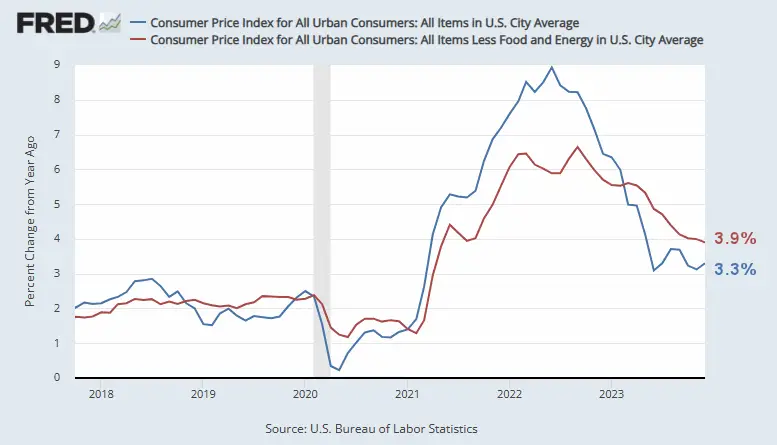There seems to be a perennial debate about whether wages are keeping up with inflation. The media in particular loves to stoke this particular divide. We delved into this a bit in our article Not All Prices Have Inflated Since 1964 in which we showed that although wages in nominal terms haven’t kept up for the “median” worker, but the “average” worker is doing better. This indicates that many workers are better off than in 1964, but not all (on a purely inflation-adjusted basis).
Despite the numbers, purchasing power in many technology sectors has multiplied so many times and quality has increased so drastically that even though overall prices multiplied ten-fold, things like Televisions are 100 times cheaper in real terms than in 1964. A base model TV cost $449.88 in 1964 or 6.8% of the average family income and only $49.99 in 2024 (i.e., less than 1/10th of 1% of an annual income of $56,473). And every smartphone has more processing power than the most powerful 1964 government computer.
BLS Employment Costs Report
On Wednesday, January 31, 2024, the U.S. Bureau of Labor Statistics released their quarterly report on “Employment Costs”. Based on that report wages and salaries increased 4.1% from December 2022 to December 2023. We have to remember that according to the BLS, annual inflation in December 2023 was 3.35%. So, based on that criteria wages increased significantly more than actual inflation.
But that of course isn’t the whole story. If we exclude the volatile food and energy we get a “core inflation” rate in December of 3.9% which is fairly close to the 4.1% wage increase. And one problem with wage increases is that they only happen after a year of spending at a higher rate. So you need a slightly larger wage increase to “make up” for what you’ve already spent at the higher price.
 Source: St. Louis FED
Source: St. Louis FED
However, people do spend a good portion of their income on food and energy so comparing wages to “core” inflation is counterintuitive. So, we could conclude that wages have significantly outpaced the Consumer Price Index in 2023. Breaking wage increases down further we see that wages increased 4.5% for Union Workers, 4.0% for Non-union workers, and 4.6% for Government workers.
While we might see this as good for the workers. Increased wages can be seen as a factor pushing up future inflation, since manufacturing costs will go up due to these wage increases.
Benefit Costs
Although wages increased between 4.0% and 4.6% benefit costs that employers pay did not rise quite as much. Benefits will cost companies 3.8% more and governments 4.6% more. Once again exceeding the posted 3.3% inflation rate by a healthy margin.
Conclusion:
2023 was a good year for workers, as wages increased significantly more than overall inflation, and unionized workers and government employees benefited the most.
Source: The BLS Employment Cost Index Summary
You might also like:
- Inflationary Expectations Do Not Cause Inflation
- December Inflation Increases to 3.35%
- Not All Prices Have Inflated Since 1964
- Worldwide Inflation by Country in 2023
- What is Core Inflation


Leave a Reply